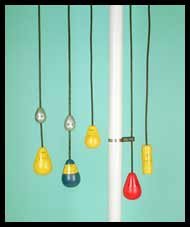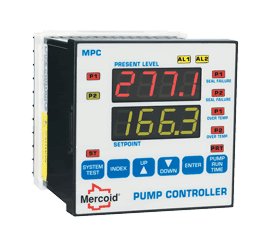"Gross" Profit
"Gross" Profit
While capital spending decreases, the economy goes down the toilet (pun intended); one industry that will never stop growing is wastewater. Although some might consider wastewater as "gross", it can however be very profitable. So in a way, you can say that wastewater is "gross" profit.
Wastewater is one industry that will never run out of resources. You will never see our domestic wastewater outsourced to another country. Furthermore, as water continues to become a more scarce resource, it makes processing and cleaning the wastewater so much more important. Where Dwyer plays a big role is in how wastewater is transferred to the treatment plant.
Most wastewater pipelines operate via gravity. Sewer pipes are laid at a slight decline to let the waste flow downward. This is a very economical and reliable way to transfer waste. Due to the fact that waste can only flow down so far, it needs to be raised or lifted. Thus, we have lift stations that essential lift up the waste to start the flow of gravity again. Lift stations are found more prevalently in low lying states such as Florida and Louisiana. The city of Jacksonville, Florida alone has over 1,500 of these lift stations.
Inside the lift station, the accumulation of wastewater is allowed up to a certain level. Once this level is reached the station then pumps the wastewater up (lifting) to start the gravity flow again. A lift station normally consists of the following: a collection container, at least two submersible pumps, and some type of level control system. In normal operation only one pump will be needed to control the level of the lift station. The second pump is needed in case the first one fails or if there is an unanticipated increase in the level.

There are a wide variety of submersible pumps. Two features that almost all submersible pumps have in common are seal failure probes and an over temperature switch. There are typically two seals on a pump that protect the pump's motor from the wastewater. There is a chamber between these two seals that contains oil and the seal failure probes. If the first seal breaks or starts to leak, water enters into the chamber. The seal failure feature uses conductivity to detect the presence of water. When water is detected, a seal failure light is lit on the pump control panel to warn the user of the broken seal. The user can then replace the seal without further damage to the pump. If this feature is not used, the user will risk completely losing his pump if the second seal breaks and water enters into the motor.
The over temperature switch is also a safety feature that shuts off the pump automatically when the pump motor overheats. There is also an over temperature light to indicate the pump has overheated. Normally a clogged pump will cause an over temperature condition. The indication allows the user to fix the pump. Pump over temperature is more critical than seal failure, because with seal failure the pump does have the second seal to protect it. That is why in some cases, users will let the seal failure pump stay in service, while they do take the over temperature pump out of service.
Users also lengthen the life of the two pumps by alternating them. The alternating of the pumps is commonly called lead lag. The first pump to come on is the lead pump the second pump to come on is the lag pump. Because the pumps alternate, the lead pump and lag pump will change. If pump A comes on first as the lead pump, the next time the pumps are needed, pump A will be the lag pump. By doing this you use both pumps equally. If the pumps were not alternated the lead pump (first pump to come on) would quickly wear out. Users typically want to see exactly how long each pump has been running for maintenance reasons. This is accomplished by installing hour meters on the pump control panel. The meters verify the pumps are being used equally.

The seal failure, over temperature, hour meter, and alternation are all features protecting pumps not controlling them. The majority of lift stations currently use five floats and a relay board to turn on the pumps. This is the simplest and lowest initialcost to control the level of a lift station. The initial cost is low, but problems associated through the life of floats are high. This is because you have five floats dangling (two for each pump, one for a high level alarm), and they can become tangled. When they get tangled and fail to switch, an overflow condition will occur. Another common problem is grease coating the floats and weighing them down. Again causing overflow conditions. For an overflow condition, picture your toilet backing up on a grand scale in the streets. Overflows cause services calls. Now, imagine the labor it takes to clean an overflow wastewater incident.
At Dwyer we provide an easy step away from floats with our MPC Pump Controller and our series of submersible level transmitters. The submersible level transmitters can be used with anyone's level controller that accepts a 4-20 mA input.
The MPC (Mercoid® Pump Controller) and the PBLT2 (Mercoid® Submersible Level Transmitter) provide an economical solution to continuously monitoring and controlling a lift station. The MPC has built in seal failure indication, over temperature indication, alternation, and pump run time. In addition, it has a built in power supply to power the submersible level transmitter. The MPC has a 4-20 mA retransmission of the level as a standard feature. This feature would commonly be fed into the municipality's SCADA system. A SCADA system is a system that monitors multiple facilities and lift station from one central location. Another nice feature is the time delay alarms. The time delay is needed to protect against false alarms. The only option is Modbus communication. This would allow the SCADA systems to see the seal failure and over temperature conditions, pump runtime, and alarms.


The PBLT2 is one of the sturdiest wastewater transmitters on the market. The body and diaphragm are 316 SS. The transmitter has an accuracy of 0.25%, so on a 10-psi range (10 psi = 23.1 feet) you have and accuracy of 0.7 inches. The ETFE cable is rated to 270-pounds of tensile strength, shielded, as well as vented. The 316 SS body and the ETFE cable are important to withstand the very harsh environment of wastewater. The transmitter also features built in lightning protection. Lightning can travel up to ½ mile away through sewer pipes in the ground. This is a common point of failure of submersible transmitters that do not have this feature. The most important thing to facility managers is reliability and the PBLT delivers it.
Lift stations are not only for the city and county municipalities, but exist in commercial applications as well, like Super Wal-Marts, car dealerships, and strip malls. In these applications, they collect the wastewater in a lift station and reduce the number of sewer lines feeding into the city's main sewer line.
With the MPC and PBLT, Dwyer provides an economical and reliable solution for the needs of the municipal and commercial lift stations. If users are not comfortable enough yet to make the jump from floats to transmitters, we have a complete line of economic UL and non UL floats for lift station applications as well.
